All products featured are independently chosen by us. However, SoundGuys may receive a commission on orders placed through its retail links. See our ethics statement.
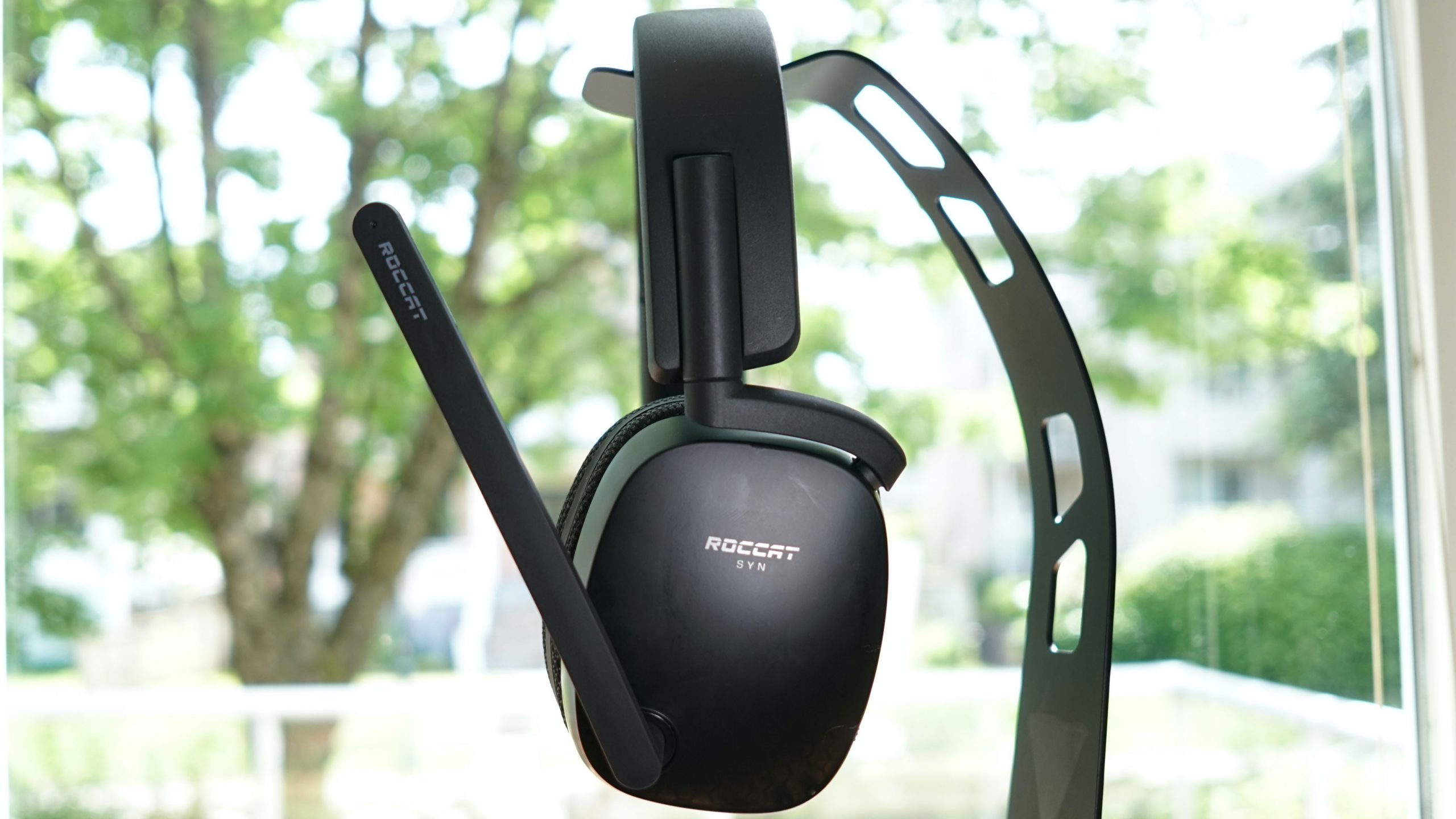
ROCCAT Syn Pro Air review
June 22, 2021
Roccat Syn Pro Air
Having put out some rather dated hardware in the not-so-distant past, ROCCAT is back with a hardware and software refresh. The ROCCAT Syn Pro Air represents the beginning of a new design aesthetic and an effort to modernize the company’s PC gaming peripherals. This new gaming headset sports a fresh look and software, and claims of high performance where it counts.
Let’s see if this new direction is the way forward.
Who is the ROCCAT Syn Pro Air for?
- PC gamers who want something wireless and lightweight for long sessions at their desktop battle stations.
- At-home workers who need something simple for a day full of Zoom calls.
What is it like to use the ROCCAT Syn Pro Air?
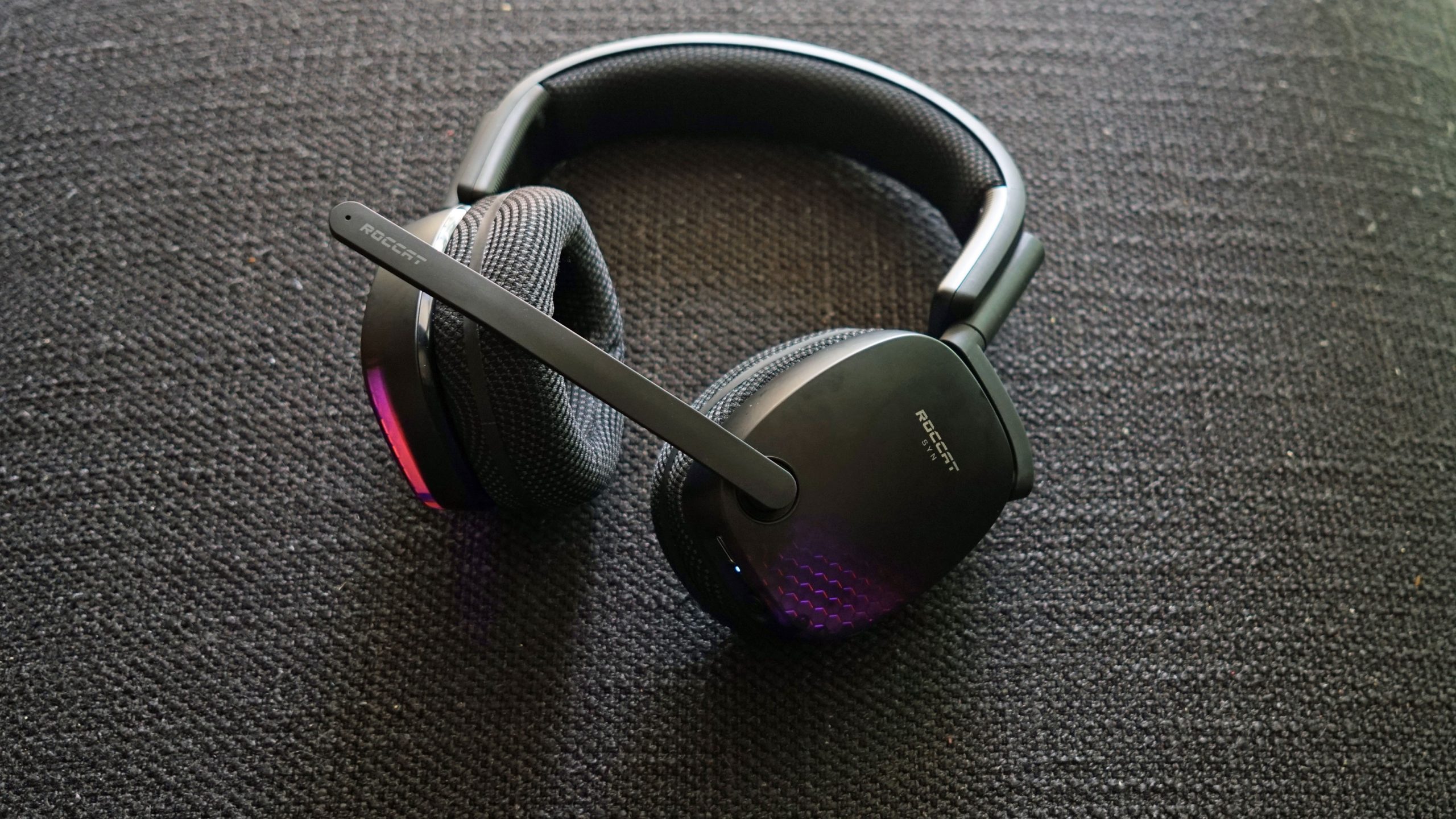
The ROCCAT Syn Pro Air is different from its predecessors, the ROCCAT Elo line, in a lot of ways—in a basic sense, it’s a less cluttered experience in just about every way. From its physical design to its software, pretty much everything about using the headset is clearly intended to take a little less work, and a little less time.
This wireless gaming headset connects to your PC using a USB-A dongle (it comes with a USB-C adapter). It’s built entirely out of plastic, but it doesn’t feel cheap—it’s exceedingly flexible and doesn’t creak at all. Sticking to plastic also keeps the weight down, which is great for long gaming sessions. The Syn Pro Air’s ear pads and headband cushion are covered in a soft mesh fabric that manages heat quite well—it also makes establishing a decent seal pretty easy, though it doesn’t exactly do wonders for isolation.
What is ROCCAT Neon, and how do you use it?
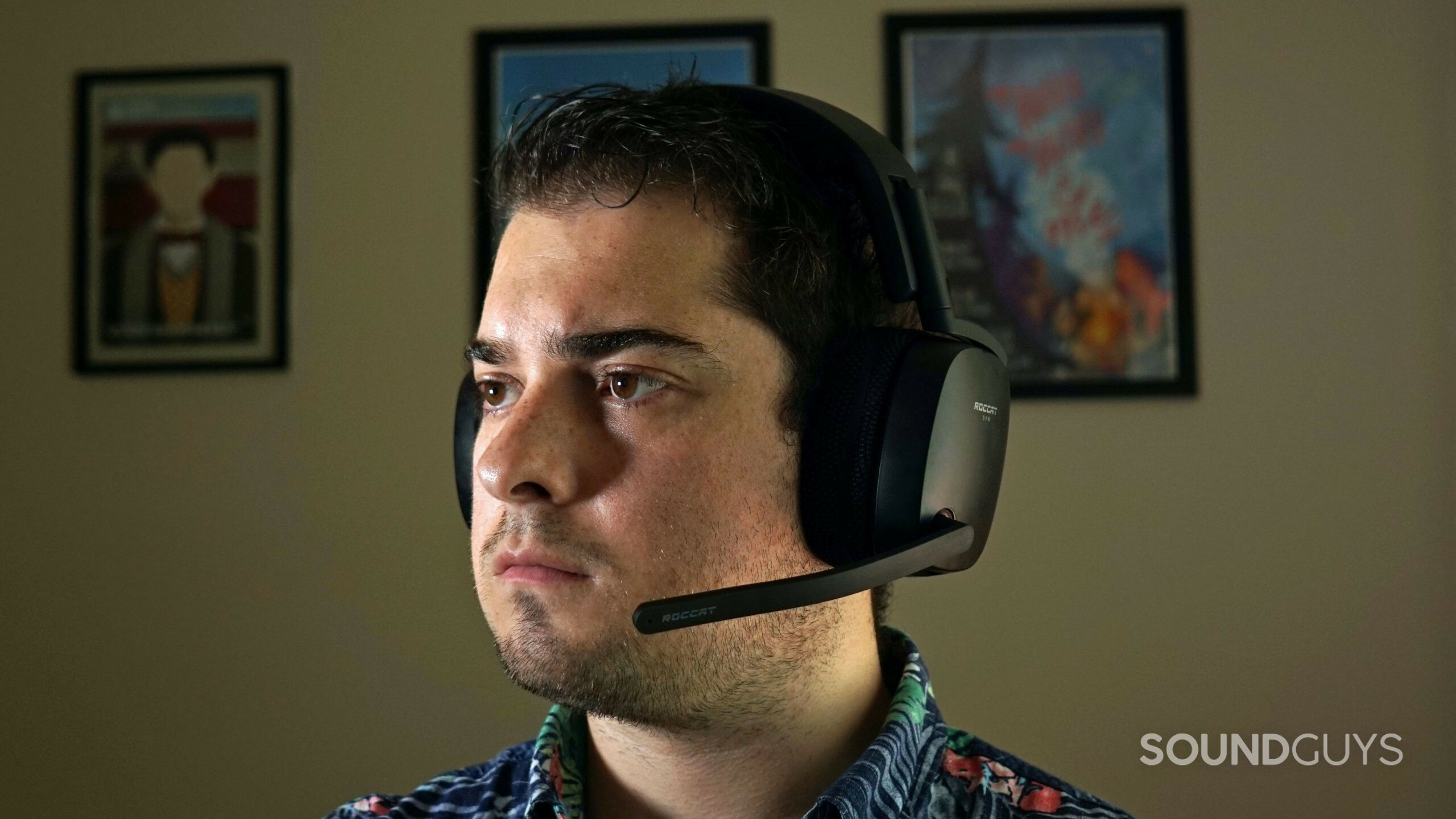
Actually using the headset is pretty straightforward, when it comes to the hardware. The ROCCAT Syn Pro Air features a lean on-ear control suite, with a dial for volume control on the left ear, a dial for mic monitoring volume on the right ear, and a detachable microphone that flips up to mute. Apart from that, everything else is handled by ROCCAT’s new companion app, Neon.
Compared to ROCCAT Swarm, the complimentary Elo headset app that supports its other gaming peripherals, ROCCAT Neon seems like a big improvement. Swarm is a cluttered mess of features stashed in a strange layout that depends on pinning things to a favorites page to function, but Neon is clean—its layout is easy to parse, with intelligently organized features, and new ones being added.
Related: Everything you need to know about surround sound in headphones
The new app brings support for Waves 3D audio and a host of other specialized gaming features, like Superhuman hearing, a mode for boosting game dialog, and more. It also has menus for controlling the Syn Pro Air’s LED complement, and setting a custom EQ profile. Everything is presented cleanly, and you don’t have to go hunting for any specific tweak (unless you want to turn mic monitoring off, that still isn’t available). There’s just one problem: not all of it… actually works.
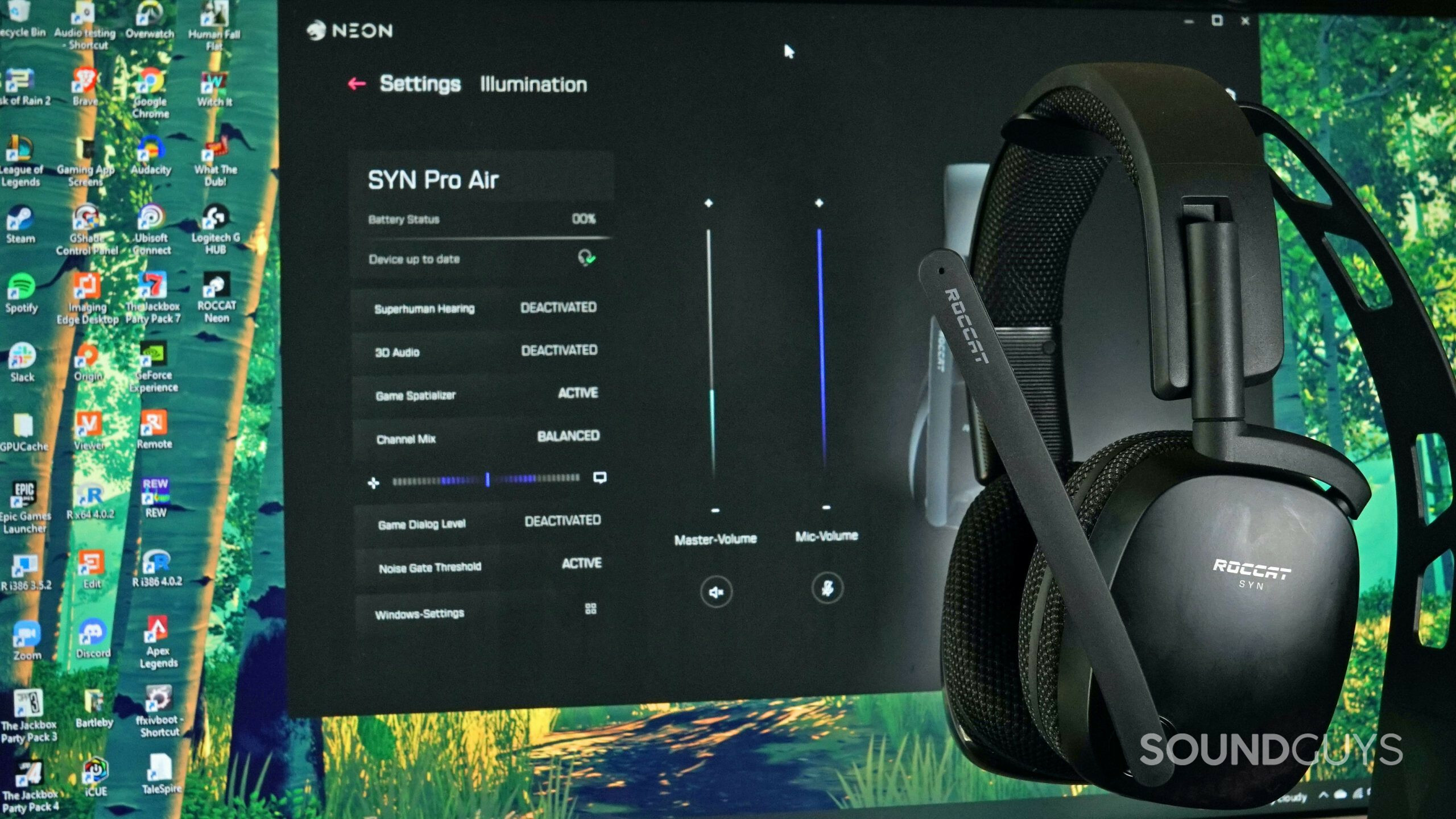
While it’s apparent Neon represents a big leap forward, at the time of writing, it’s still clearly a product in beta, and a few kinks still need working out. For starters, the app has a habit of partially losing connection to the headset—it’s not like the Syn Pro Air ever loses connection to your PC, but sometimes Neon just won’t offer a battery reading or volume control in the app. The illumination menu also only partially works—turning on AIMO starts automatically cycling colors, but I’ve used a few versions of the app at this point, and trying to set a custom lighting scheme still just turns the lights off entirely. The app is also fairly slow to respond, though this has fluctuated pretty wildly depending on the software version (currently we’re using version 0.7.10).
It’s not all bad, though. Important features like 3D audio have worked without issue the whole time. ROCCAT is also actively adding to Neon, having patched in custom EQ support during our review period. Frankly, Neon’s not quite done yet, but all indication points toward it getting there eventually.
How is the battery life of the Syn Pro Air?
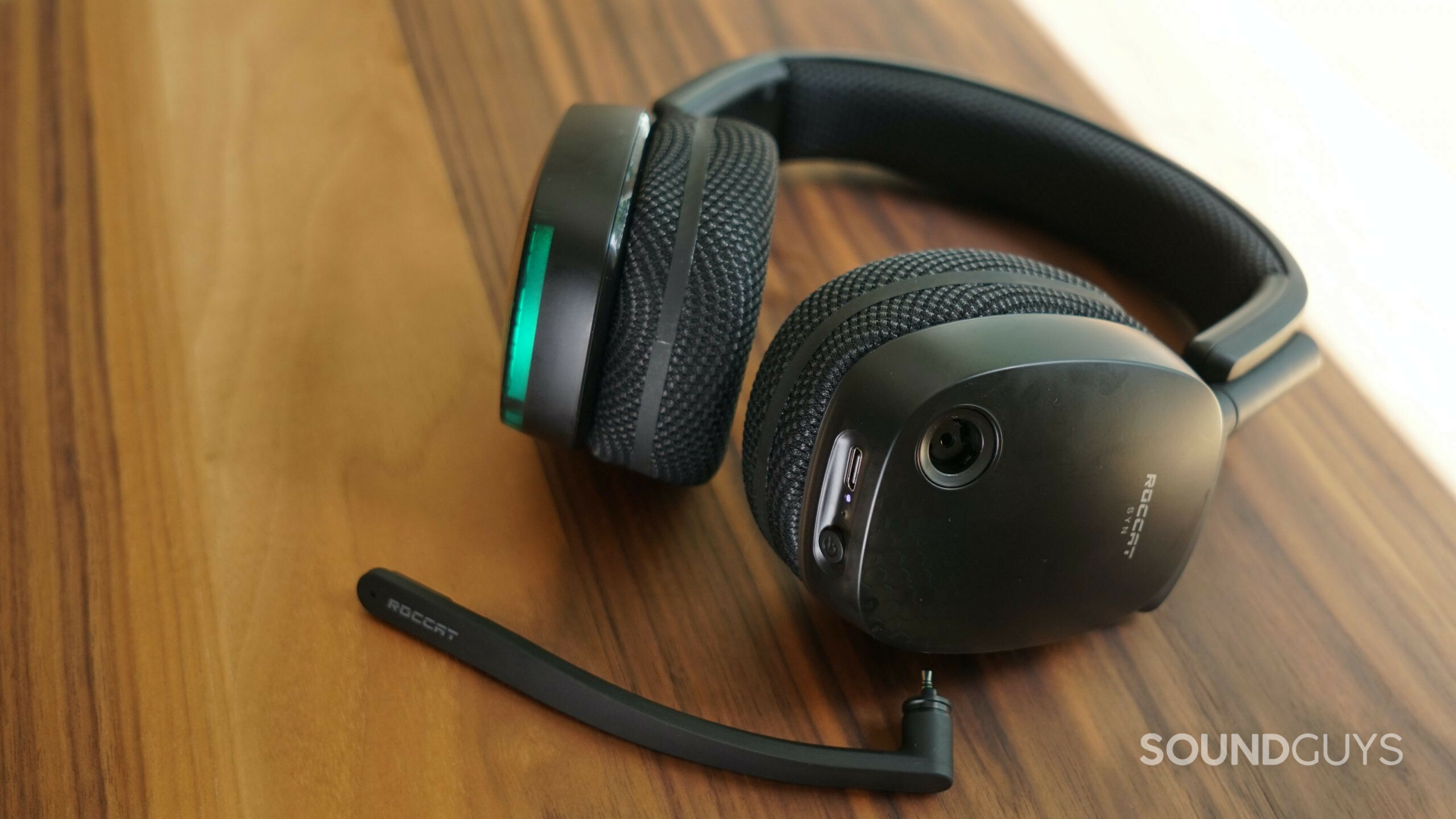
According to ROCCAT, the Syn Pro Air can last up to 24 hours on a single charge. That may be true in very specific conditions, but it doesn’t match our results. At a consistent output of ~75dB with the LED lights turned on, the ROCCAT Syn Pro Air lasted 17 hours, 34 minutes—nothing to sneeze at, but well short of the full day advertised. You’ll almost certainly get closer to that longer target if you turn off the LEDs and all the different audio features offered by Neon.
How is gaming with the ROCCAT Syn Pro Air?
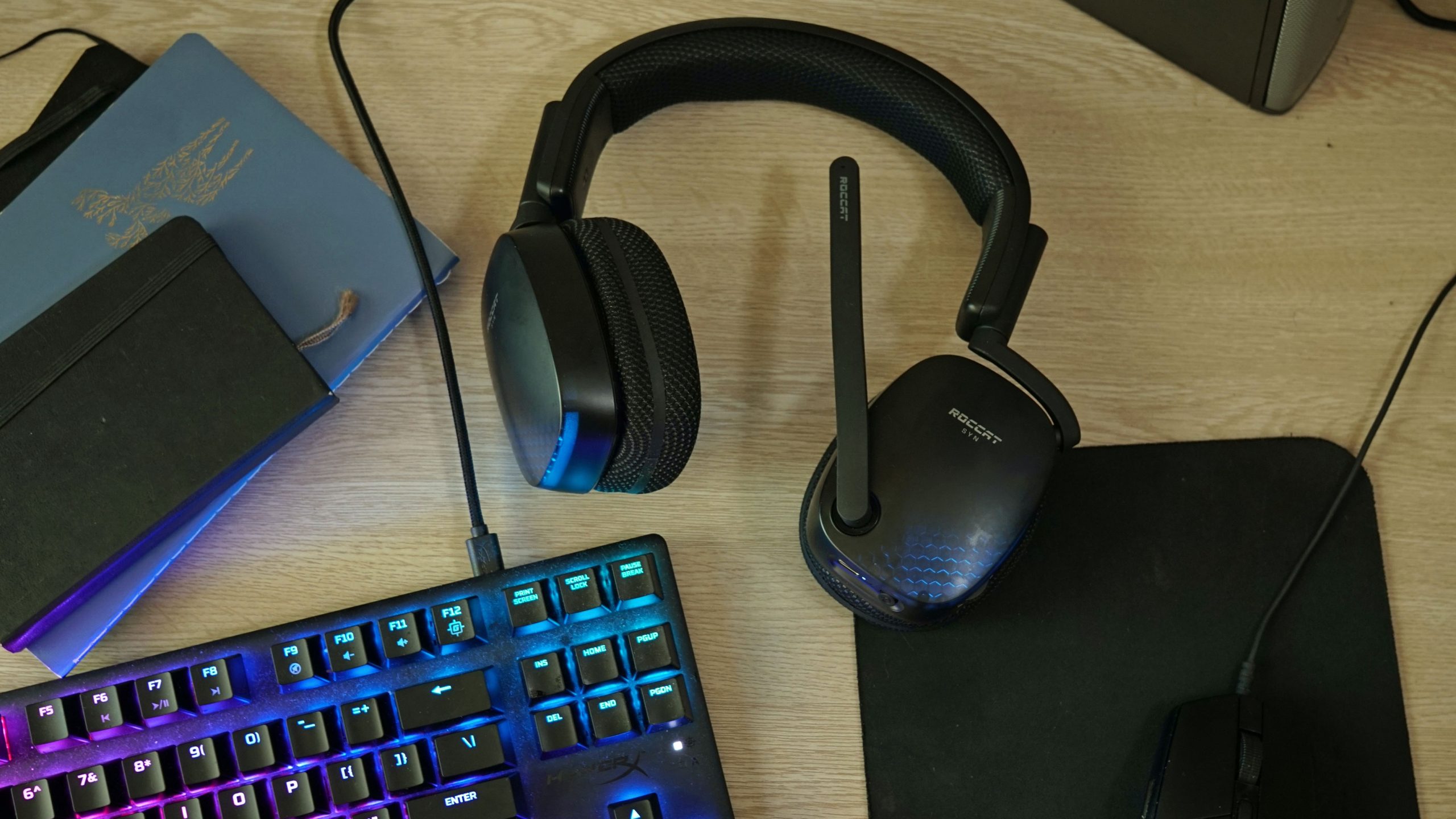
The ROCCAT Syn Pro Air offers a pretty solid gaming experience. It’s comfortable and lightweight, which is great for long sessions, and you’ll be able to fit a few in before needing to charge up. The headset is occasionally very slow to pair with its dongle (taking up to 30 seconds)—you may find yourself wondering if something is wrong before the connection is established. Nevertheless, once the connection is made, the headset works just fine on PC, PlayStation 5, and Nintendo Switch—the USB-C adapter also means you can pick which front-facing port to use on the PlayStation 5, and play undocked on the Switch.
However, this is definitely a PC-first gaming headset, due in no small part of Neon, and it’s largely a very good one at that. The headset never struggled with the sound profiles of games like Apex Legends and League of Legends, and the 3D audio feature handled positional sound queues generally pretty well. Thankfully, Neon’s gaming features work consistently, and it’s the arguably less important stuff that still needs work.
How does the ROCCAT Syn Pro Air sound?
Loading chart ...
The ROCCAT Syn Pro Air offers largely accurate audio (cyan) for a gaming headset, hewing pretty closely to our target curve (magenta line). Bass is nicely emphasized, as is high range sound. The dip in mid-range sound between 200-500Hz is too bad, but not likely to cause huge problems when gaming.
Audio output like this is great for music that relies on bass range sound, like EDM, as well as songs featuring singers with deeper voices, given the nice bump in output from 80Hz up to 200Hz. In Modulogeek’s One Day We’ll Be Okay the added bass and high range emphasis means that the low ambient tones that run through the song come through nicely, without masking the synthesized chimes and snaps that build in the latter half.
In game, frequency response like this should work quite well for games of all genres. The mid-range de-emphasis might make subtler sounds like footsteps a little harder to hear in games like Fortnite, but given that bass range sound isn’t boosted much, it’s a pretty remote possibility.
Loading chart ...
The ROCCAT Syn Pro Air offers decent isolation performance for a gaming headset. It’s not enough to block out any doorbells or keep you from noticing when someone’s talking to you, but the sounds of traffic down the street from your window shouldn’t trouble you. This wouldn’t be able to block an adequate amount of sound outside or in busy a cafe, but given it’s bound to USB dongle, that’s not really a concern.
How is the microphone?
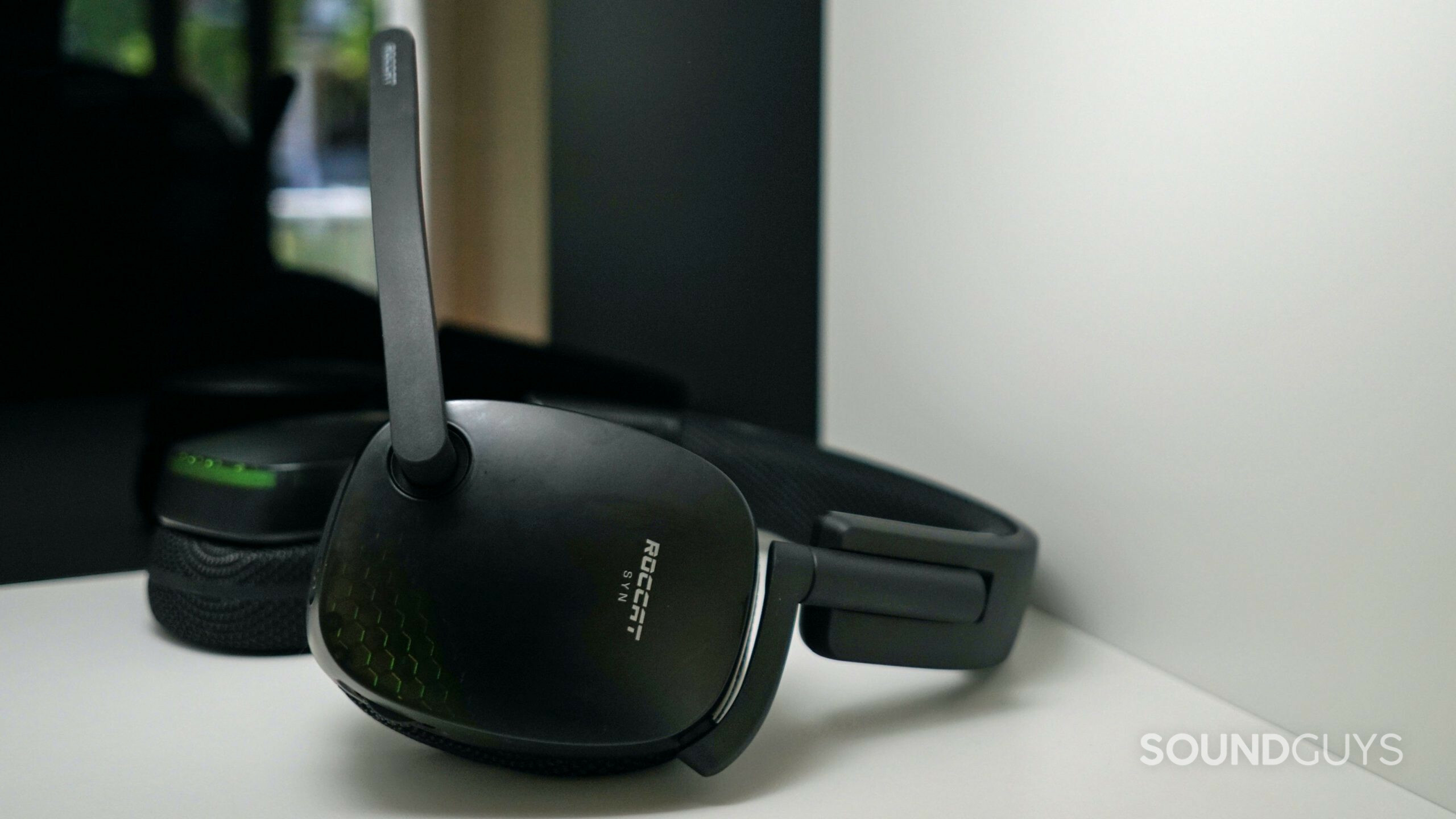
The ROCCAT Syn Pro Air microphone sounds better than most gaming headset microphones. It’s clear, loud, and offers an adequate amount of bass range emphasis to keep most voices sounding natural. You won’t find anything ready for broadcasting here, but this is definitely good enough for a work Zoom call or even the occasional Dungeons and Dragons session without much fiddling. Listen for yourself:
How does the microphone sound to you?
Should you buy the ROCCAT Syn Pro Air?
If you want a headset that sounds good and feels good, and you don’t wait for the software to catch up, you should consider the ROCCAT Syn Pro Air.
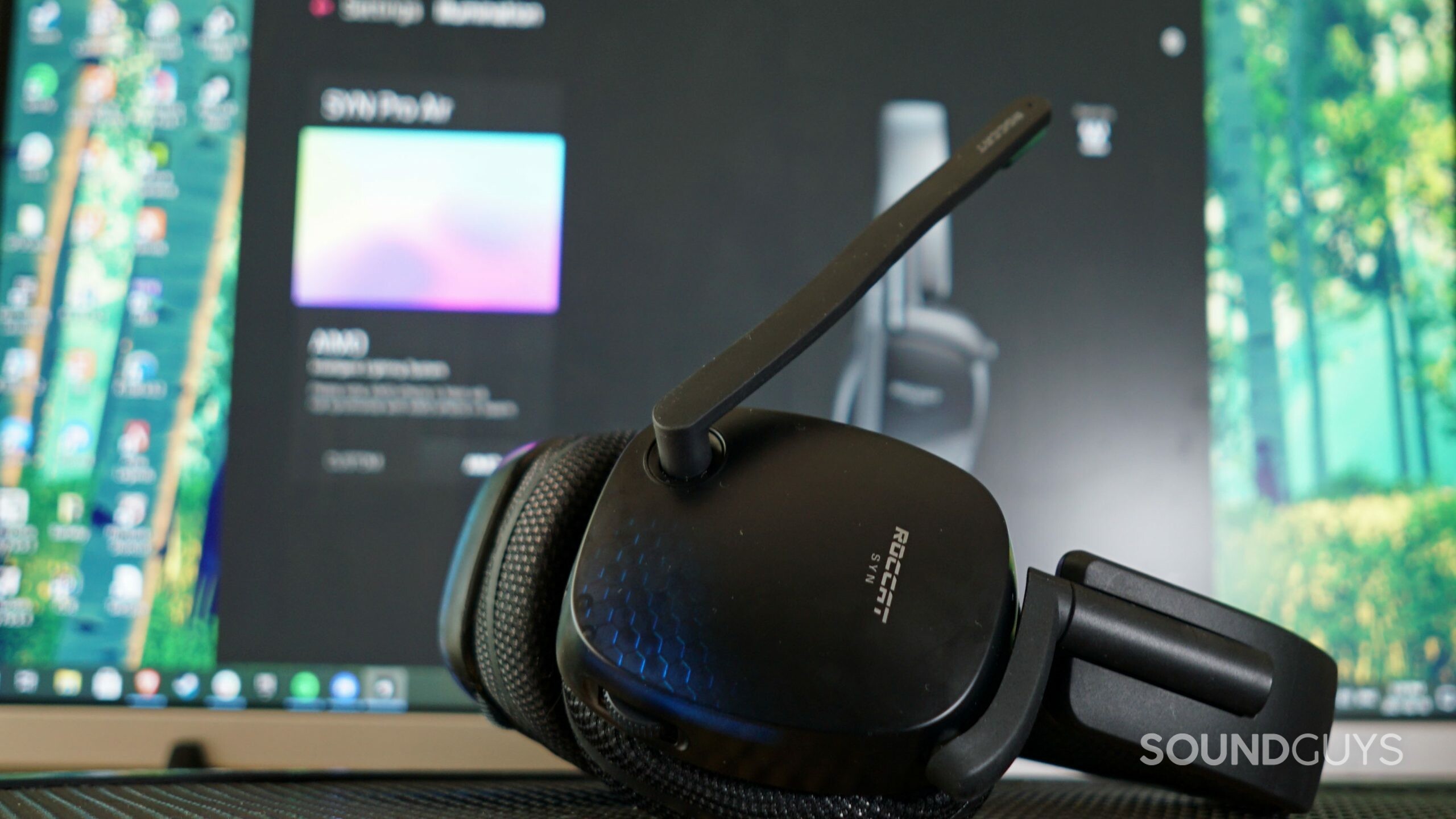
The Syn Pro Air is a rather frustrating headset, in a way. From a hardware standpoint, it’s very good—it sounds great, it’s comfortable, it has a solid microphone, and its battery life isn’t bad either. For console gaming, it’s a pretty sweet package for $149.99 USD. However, this is a PC gaming headset first and foremost—like it or not, most PC gaming headsets rely on apps to fully work, and Neon just isn’t quite there yet. Add on to that the occasionally frustrating pairing experience, and you’ve got an impressive headset on paper with a handful of little quibbles holding it back.
The bright side to all this is that updates can fix pretty much every issue I’ve encountered. ROCCAT is definitely not done with Neon, and if the app experience improves, no doubt this headset will become a better buy. Right now it’s pretty good, but with software that’s a little less blatantly “in beta,” it could be great.
What are some alternatives to the ROCCAT Syn Pro Air?
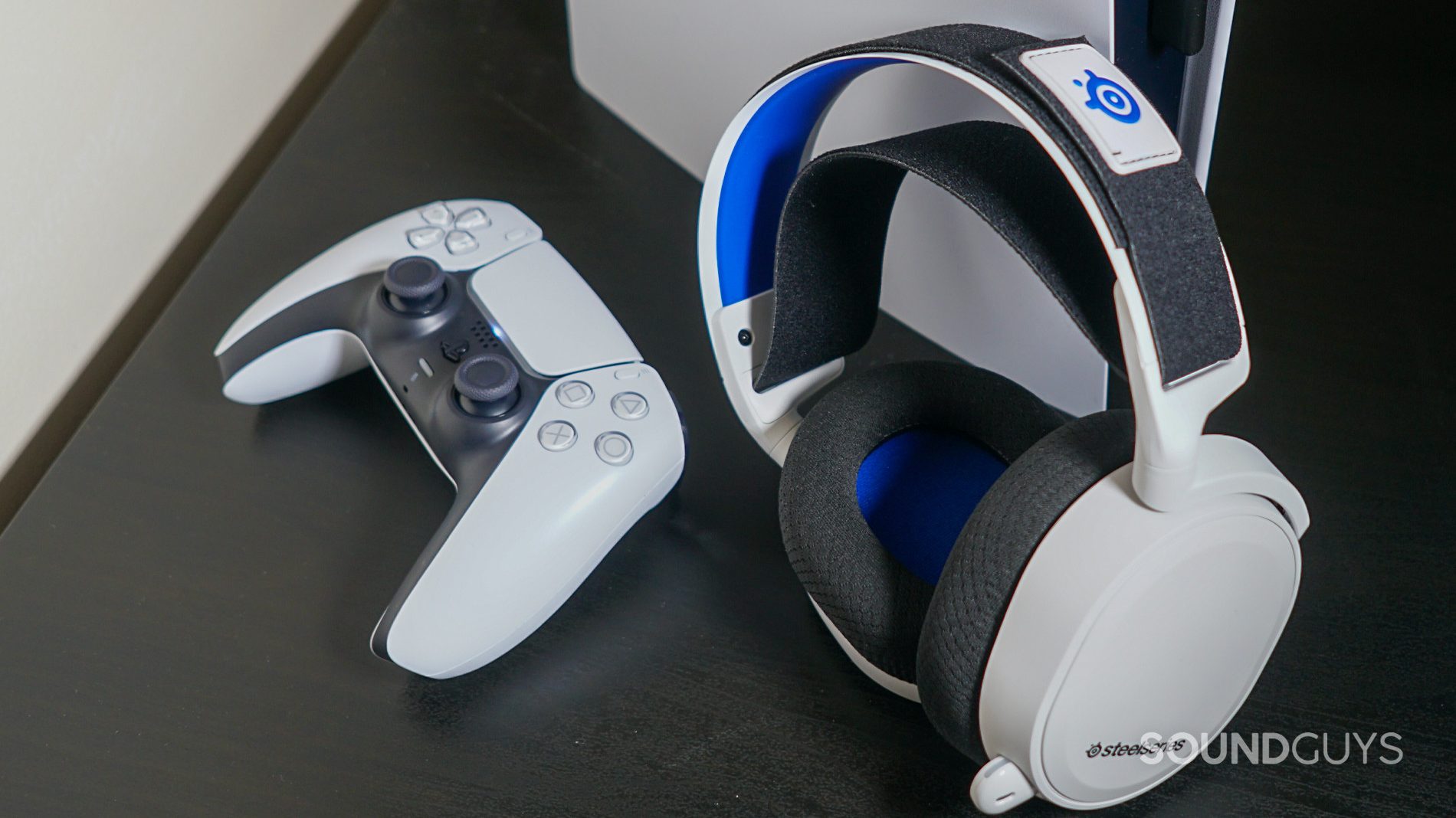
The $100-200 USD range is without a doubt the most competitive part of the gaming headset market, which means you can find some pretty great stuff, especially if you’ve got a clear idea of your needs. If a multi-platform wireless gaming headset is what you want, and you don’t really care for added software features, the SteelSeries Arctis 7P offers far better battery life and a USB-C dongle (it has a USB-A adapter) for the same price as the Syn Pro Air. The HyperX Cloud II Wireless offers a similar value proposition, with additional software features on PC, and that classic red and black look.
If wireless audio isn’t as big a deal to you, but all those extra PC features are a must, the Logitech G Pro X is $20 USD cheaper and still offers the best microphone customization around. The Razer BlackShark V2 is even cheaper, and manages a lot of the same features, along with best-in-class isolation and audio.